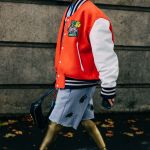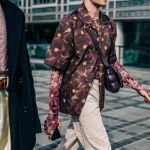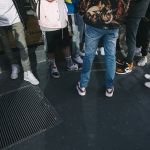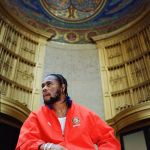
How has streetwear changed in Italy?
Analysis of a phenomenon from 2016 to today
October 30th, 2021
There was a time when streetwear had a shimmering and at the same time mysterious aura to cover it, it was a historical period evidently of transition, in which fashion, music and art aligned to lay the foundations of a generational phenomenon that was still forming. The early '10s were fundamental in this regard. Fashion has approached rap thus giving birth to the cult around the work of Riccardo Tisci from Givenchy, among the very first to make streetwear a catwalk business, but above all, giving birth and growing the figures of those who would become the Midas Kings of fashion today: from Virgil Abloh to Matthew M. Williams to Heron Preston.
Creating hype is the real first job of these men able to do everything: they are DJs, they are designers, they are artists. Abloh in particular embodies a myth built over the years between the appointment as artistic director of the joint album of Kanye West and Jay-Z, Watch The Throne, the birth of Pyrex Vision and Off-White and the arrival from Louis Vuitton in 2018. There are intermediate steps in Abloh's recent past that, in a broad sense, are even more important than the events just mentioned. If today streetwear is a mass phenomenon, we owe it in particular to him. Because what binds an Industrial Belt of Off-White and a pair of Nike x Off-White is precisely the zip-tag of the brand founded by Abloh. There, between the two items just mentioned, we can place the birth of the streetwear phenomenon, which together with a pair of Yeezy 350, the Supreme logo boxes and Zara's forty-euro jeans saw its explosion in 2015.
Being an hypebeast
Today the word hypebeast is considered as an insult, yet you don't have to look too far back to remember when you boasted of being one. The outfit battles on Youtube and the soundtracks of that period, from X0 Tour Llif3 by Lil Uzi Vert to Goosebumps by Travis Scott, represent a manifesto of those who in those years, with a pair of Air Pods from € 200 recited by heart the prices of each garment they wore together with the verses of LaFlame. A legacy impossible to erase, so much so that even today, over five years later, items such as the hoodies and the Jordan 1 have remained two staples of a movement that in reality has only lost the name and the desire to appear that there was once, confirming the hypebeast phenomenon as a capable trend, for better or for worse, to leave a mark.
In our house, the explosion of streetwear is obviously linked to the arrival of trap music and to those names like Sfera Ebbasta and DPG, which between rhymes and fitpic have brought in the minds of Italian teenagers the urgent need to speak like them and, above all, dress like them. To satisfy this hunger for fashion, hundreds of pages and communities were born in which the impossible item was sought in a mechanism in which a physiological growth in demand corresponded to an obvious reduction in supply.

Objects of desire
As mentioned, streetwear would not hesitate without Virgil Abloh, but especially without Kanye West and his Yeezy 350 v2. Produced in dozens of colorways even today, the sneakers part of the collaboration between Ye and adidas were among the most requested items, the backbone of entire outfits together with the aforementioned Jordan 1 and among the first sneaker models to be part of what later became the world of resell.
But there is one brand among others that has benefited exponentially from the birth of the streetwear phenomenon: Supreme. The mysterious and once exclusive aura of the brand founded by James Jebbia has conquered children all over the world, giving us the first case of legal fake and clearing skateboarding as a cultural and customary phenomenon. The partial decline of the brand and the loss of its charm corresponds precisely to the end of an era, that of Thursday drops and bots that for years has been part of the routine of a huge number of teenagers and not.

Streetwear today, in Italy
Today streetwear is so established that it no longer makes the news. Something has changed though: the style of his key personalities. There has been an evolution towards a less flashy type of streetwear, in some ways even more functional and sustainable. Opening TikTok it is not uncommon to find videos that advise which pants should be in the wardrobe for the winter, with the now inevitable workpant Dickies or Carhartt that have taken the place of Zara skinny. The flashy style made of ostentation and logos has partly disappeared, replaced by minimal looks in which the imperatives seem to be "cozy" and "conscious". While fits have changed, shopping habits have also done the same, giving rise to ubiquitous trends in social feeds and city streets: the Detroit Jacket and the Varsity have seen a second youth with the rediscovery of vintage and second hand, while a cardigan combined with Sebago has become an other more than valid to the combo hoodie and sneakers.
But if you think that that world has disappeared, you are very wrong. The Yeezy 350 V2 continues to dominate sales, while the appeal of Supreme's box logos continues to remain intact at resell sites. The Jordan 1 were joined by the Dunk, but also opening the way to novelties, above all the rebirth of the New Balance thanks to the work of Teddy Santis, what we could define as the Virgil Abloh of the coming years.
The real news, however, is how much this speech is also valid on Italian soil. Knitwear, as well as trousers with looser fits, have seen an exponential growth in the armani of Italian teenagers who, thanks also to the arrival of UNIQLO in our country, have begun to see light at the end of the tunnel. The real question, however, is whether this change in tastes and styles is due solely to the growth of what was once the "hypebeast generation" or if this has changed their tastes only because those who once influenced purchases and outfits have changed the rotation of their wardrobe. The answer, probably, lies in the middle. Driven by streetstyle and Instagram feeds, the passion for fashion once born thanks to Virgil and Kanye has come to life, turning into what is in effect the post-streetwear phase.




















































































